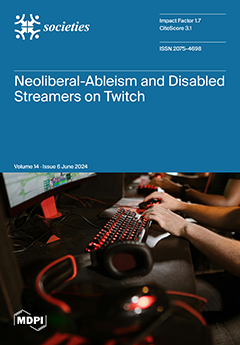Open AccessConcept Paper
Keeping It Real: Insights from a Sport-Based Living Lab
by
Louis Moustakas, Marieke Breed, Nynke Burgers, Sarah Carney, Ties Greven, Patricia Grove, Lisa Kalina, Perry Ogden, Karen Petry, Simona Šafaříková, Ben Sanders, Arnost Svoboda, Julie Wittmannová, Pim van Limbeek and Fenna van Marle
Viewed by 1481
Abstract
Sport for development (SFD) initiatives have faced numerous criticisms around the focus on individual-level (micro) outcomes and lack of integration at the community (meso) and structural (macro) levels. As a result, there is growing recognition that programmes need to find ways to work
[...] Read more.
Sport for development (SFD) initiatives have faced numerous criticisms around the focus on individual-level (micro) outcomes and lack of integration at the community (meso) and structural (macro) levels. As a result, there is growing recognition that programmes need to find ways to work with and engage a wide range of community members and stakeholders through more inclusive, participatory approaches. One such approach is known as Living Labs. In the following conceptual article, we present the Sport and Social Cohesion Lab (SSCL) project, which implemented a Living Lab approach in various sport-based programmes from four different European countries. The main components of the Living Lab framework are presented, and practical insights are derived from the project. In addition, the unique and sometimes critical role of sport is reflected upon in relation to the Living Lab context. Through this, this article provides practitioners and academics with potential building blocks to implement Living Labs and/or embed participatory approaches in sport and physical activity contexts and social settings more generally.
Full article
►▼
Show Figures





